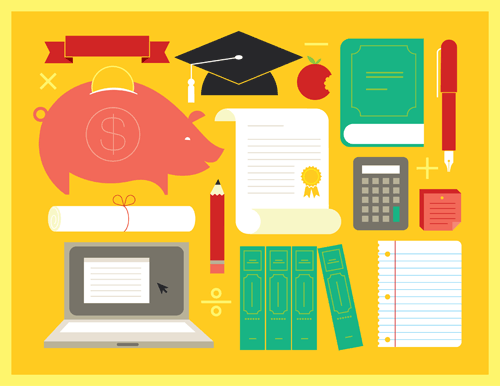Submitted by Lydia Malley an... on

This is a cross-post from The Quick and the Ed, authored by Lydia Malley and Teresa Kroeger.
Original post date: August 18, 2014
This is the first of two posts about U.S. teens’ results on a recent international assessment of financial literacy.
The first international survey of 15-year-olds’ financial literacy, released last month, revealed that U.S. teenagers score on a par with teens around the world. But among U.S. 15-year-olds, regardless of socioeconomic status, teenagers who had a bank account and a pre-paid debit card had higher financial literacy scores than those who had neither.
The Organization for Economic Cooperation and Development’s (OECD) Program for International Student Assessment (PISA) financial literacy assessment measured the ability of 29,000 15-year-old students in 18 education systems to solve financial problems and make financial decisions in real-life contexts. Students answered questions about their experiences with money and were assessed in skills such as interpreting pay stubs, taking out loans, and purchasing groceries in bulk. More than 1,100 students in the United States took the assessment.
Among the findings:
U.S. 15-year-olds scored average overall compared to their international peers
U.S. students scored 492 (out of 1,000) on the assessment of financial literacy, indicating that on average, U.S. students can apply their understanding of commonly used financial concepts, terms, and products to situations that are relevant to them. The United States ranked alongside the OECD average and seven education systems, higher than three education systems and lower than seven other education systems.
Approximately 4 out of 5 U.S. students reached at least the baseline level of proficiency. Nine percent of U.S. 15-year-olds were top performers, while 18 percent scored below the baseline level of proficiency.

Teens with both a bank account and a pre-paid debit card scored higher than students with neither
U.S. 15-year-olds with a bank account and pre-paid debit card scored 24 points higher than students of similar socioeconomic status with neither. Exposure to and the use of financial products may improve students’ knowledge and skills, or perhaps the most financially literate students are the ones who have bank accounts and pre-paid debit cards. However, not every student has access to either product. More than half of U.S. 15-year-olds have a bank account, a pre-paid debit card, or both. However, socioeconomically advantaged students are more likely than disadvantaged students to have a bank account (by 39 percentage points) or a pre-paid debit card (by 16 percentage points).
Sources of teen funds vary by gender
U.S. teenagers are most likely to receive their money from gifts. U.S. girls are more likely than boys to receive money from gifts, as well as from allowances without having to do chores. U.S. boys are more likely than girls to receive money from working outside school hours, from working in family businesses, and from selling things (for example at local markets or on eBay). According to the report, this may suggest that boys start to become financially independent at an earlier age than girls.
No matter the source of the funds, teens who have hands-on experience with saving and debit-card spending seem to know more about how to manage money. According to the PISA financial literacy report, previous studies have shown that when it comes to finances, direct “learning by doing” fosters good habits and shapes behavior.
About the Authors
Lydia Malley is a Researcher and Teresa Kroeger is a Research Assistant at the American Institutes for Research. They focus on comparative and international education research using data from large-scale international studies including the Program for International Student Assessment (PISA), the Trends in International Mathematics and Science Study (TIMSS), and the Progress in International Reading Literacy Study (PIRLS).
Photo credit: Flickr

Add new comment